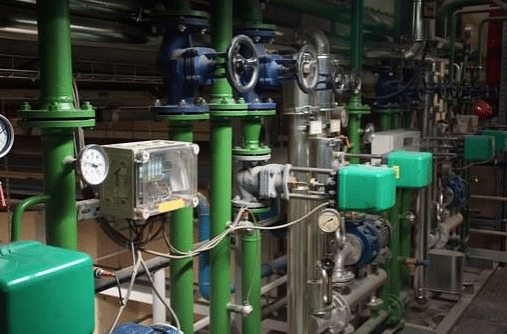Variable area flow meters have been around for over a century. This type of flow meter is one of the most versatile among all types of flow meters. They have proven to be reliable when used in different types of applications involving liquids like water and other fluids with similar characteristics. In addition to fluids, variable area flow meters are suitable for measuring flow rate and volume of gases. The features of a variable area flow meter may include:
- High pressure ratings of up to 200 psi
- Easy maintenance
- No power required for operation
- Flow ranges of 0.002 ml/min to 500 LPM for liquids and 0.1 ml/min to 2200 LPM for gases
These features can vary depending on the flow meter model.
Uses of variable area flow meters
Since variable area flow meters are quite flexible, they work well in a number of applications. You’ll find variable area flow meters in industrial uses including the following:
- Water and gas flow measurement in laboratories and manufacturing plants
- Monitoring water makeup in the food and beverage industry
- Monitoring pipelines where chemicals flow
- Monitoring filtration loading
The working principle of a variable area flow meter is based on the variances in the bore size of the tube and the density of the float material. Choosing the right kind of flow meter to match the fluid is essential because accuracy is affected if a flow meter designed to measure gas is used to measure liquid.
Advantages of using variable area flow meters
Variable area flow meters are not only flexible, but also cost-effective. Since it does not require power to operate, these require virtually no maintenance. There are no electronic parts; hence, this type of flow meter is robust and resistant to different working conditions. You will also find variable area flow meters compatible with many kinds of fluids and gases.
Effects of pressure and temperature
When choosing a variable area flow meter, the effects of temperature and pressure are essential considerations. To explain further, when back pressure rises inside the pipes, the flow rate, in turn, will decrease. This change in pressure will also impact the viscosity and density of the material, thus causing a deviation in the calibrated flow rate.
The impact of pressure in measuring the flow rate of gases is considered one of the challenges encountered regardless of the type of flow meter used. In addition to pressure, temperature also affects the flow reading but not to the same extent as the pressure does. Correction measures are employed to mitigate the effect of pressure, or flow meters can be customised and calibrated to take these conditions into account. However, regardless of the calibration, conditions may still change arbitrarily. In cases where temperature and pressure impact the reading, mass flow meters may be used as an alternative instead.
In general, applications that require low-maintenance, versatile, easy to use, and cost-effective flow meters benefit from using variable area flow meters. These flow meters are readily available and reliable for various uses.






